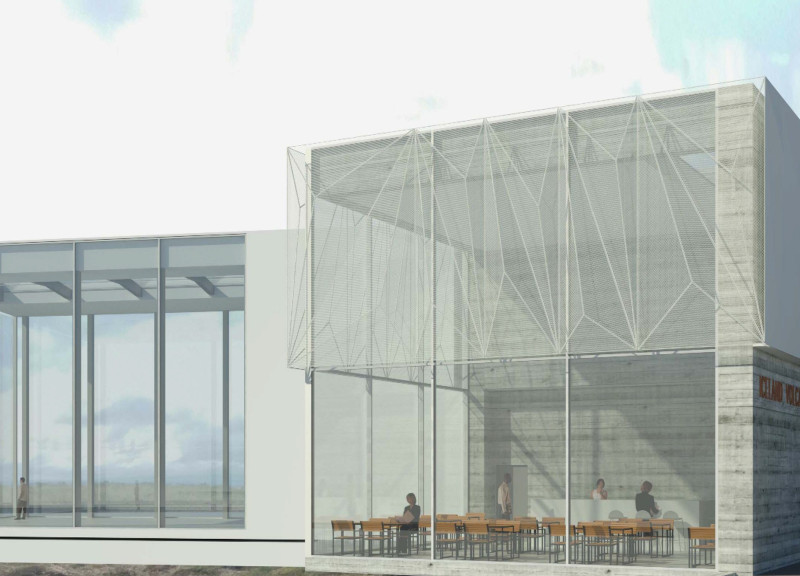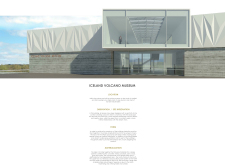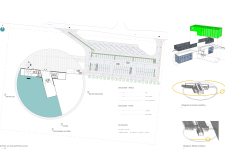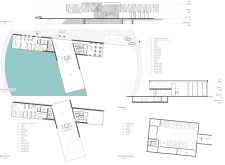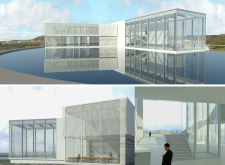5 key facts about this project
The primary function of the museum is to educate the public about Iceland’s rich volcanic history and its implication on the landscape and ecosystem. Through a variety of exhibition spaces, the museum aims to highlight the importance of geological phenomena while promoting an appreciation for nature’s power and beauty. This emphasis on education is realized through careful spatial planning, which encourages movement and interaction among visitors.
A notable aspect of the design is its integration with the existing terrain. The building features an elongated form that aligns with the contours of the landscape, creating a seamless dialogue between architecture and nature. The roof structure is particularly interesting; its angular, folded design mimics the rugged topography of the surrounding lava fields. This choice serves not only aesthetic purposes but is also practical, allowing for efficient rainwater management and energy use.
The material palette of the museum demonstrates a commitment to both durability and sustainability. Concrete forms the backbone of the structure, providing a robust framework that withstands the variable Icelandic weather. Expansive glass surfaces are employed throughout the façade, fostering a visual connection to the scenery outside and allowing natural light to infiltrate the interior spaces, significantly enhancing the visitor experience. Wood accents within the interior provide warmth and texture, making the spaces feel inviting and human-centered. Such combinations of materials highlight the thoughtful consideration behind the design, aligning it with the natural environment while maintaining modern architectural aesthetics.
In terms of structural design, the museum showcases various unique approaches that reflect contemporary architectural thinking. The central atrium serves as a multifunctional hub that encourages exploration and movement, with thoughtfully arranged pathways leading to different sections of the museum. This spatial organization promotes an intuitive flow for visitors, making it easier to navigate the diverse offerings, from interactive displays to quiet study areas.
The design also accounts for Iceland's climatic conditions, incorporating passive heating and cooling strategies informed by seasonal solar paths. Such foresight not only enhances the building's energy efficiency but also minimizes its ecological footprint, embodying a responsible architectural ethos.
In summary, the Iceland Volcano Museum is a distinctive architectural project that serves both educational and experiential functions. By integrating the building with its environment and utilizing sustainable materials, the design fosters a connection between visitors and the volcanic landscape. The carefully considered spatial organization and innovative use of materials contribute to a welcoming and informative atmosphere that encourages engagement with Iceland's geological heritage. For those interested in exploring this project further, a review of the architectural plans, sections, and design ideas will provide deeper insights into how the museum embodies a thoughtful response to its context and purpose in the realm of architecture.


